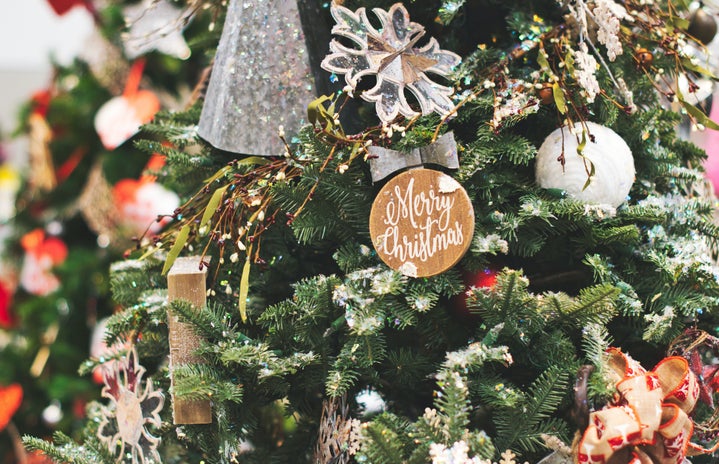December is officially the month of traditions. Let’s agree, it’s impossible to imagine this time of the year without Christmas Eve with family, Secret Santa with friends, panettones, gift exchanges and, of course, Santa Claus! This bearded man carries with him, besides presents, much of the Christmas season magic. After all, how it would be our childhood without feeling that butterflies in stomach while we waited for his sleigh to arrive at midnight?
Well, we all know that Santa is a worldwide celebrity, but can you imagine when and why he became this universal symbol? Her Campus Casper Libero explains everything about the legend of our favorite old man, its origin and meanings through history in different cultures. So, what are you waiting for? Keep ho-ho-reading!
- Oh, Holy Santa: The Catholic Origin
-
There is no unanimity among historians as to the origin of this magical legend, but most of the scholars relate Santa Claus with the Catholic figure of Saint Nicholas of Myra. He was a bishop, who lived in Turkey in the fourth century and used to anonymously help people who were passing through financial difficulties, leaving a bag of gold coins in their home’s chimneys.
Some people also attribute miracles to him, but he is best known for spreading charity and good deeds throughout the community. Accordingly, the idea of associating him with the image of the good old man who presents and cares. Nicholas of Myra was beatified after almost seven centuries from his death and became the Patron Saint of poor people, orphans and even some countries, as Greek and Russia.
- M(erry)thological Christmas: The Nordic Origin
-
However, Santa’s figure doesn’t remit only to the Catholic religion. There are scholars who associate him with Odin, the most powerful god of Nordic religious creed. The representation of Odin in the German tradition presents many similarities with the Santa Claus we love: he is a bearded gray-haired elderly man.
According to Nordic beliefs, this god was responsible for delivering presents to people during Yule, a celebration that happened during the Winter Solstice. Oh, and he used to do it mounted on his flying eight-legged horse, Sleipnir. Is that an easter-egg of our cute reindeers?
Nordics believed that Odin visited every house giving toys and candies to the children. To receive these gifts, kids leave their boots near the chimney and fill them with hay and carrots as a reward to the god. Any similarity with the stamped socks that children hang next to the fireplace in every american Christmas movie is not merely coincidental…
- What About Santa’s Apparel?: The History of Red And White Trend
-
Can you believe that some years ago, in popular imagination, Santa Claus had pointed ears and features similar to an elf? As hard as it is to believe, our old man didn’t always look the same as he does today. Until the end of the 19th century, he was represented either in the form of a leprechaun or as a skinny man (no plump cheeks around here) who wore warm brown or dark green cave clothes, depending on the country and its culture! Before that, going back to his possible association with Saint Nicholas, Santa wore priestly robes in nude and sober tones.
It was only in 1886 that he got red and white clothes, a hat, a very charming black belt and a protruding tummy, when he was reimagined by the German-American cartoonist Thomas Nast. His drawing was published in Harper’s Weekly magazine and was quite successful in the United States. However, around the world, the figure was still being represented wearing clothes in different colors, without standardization.
The red look only went viral in 1931, when Coca-Cola took advantage of Nast’s design, once its colors were the same as their brand, to develop a big advertising campaign with the special participation of Santa Claus. It was only then that Noel’s style became unified and popularized globally.
- Ok, But Why North Pole?
-
It is quite possible that this is the location of Santa’s house, also thanks to Thomas Nast. He created an entire universe of magic in his illustrations. In “Santa Claus and His Works”, a drawing that he published in 1896, we can see a notation in the corner of the image, indicating the address of our dear Noel in the North Pole. Cold, isolated and independent, there was the perfect place to house this myth.
Years later, Finland decided to use this legend to improve the local tourism. In the 1950s, the government built a wooden village in Rovaniemi (a town located in the Lapland region), which eventually became Santa Claus’ official home. Really! There you can also visit his toy factory and even personally deliver your letter to the “real” Santa who lives in the village! Magical, right?
- And What About Reindeers?
-
I’m sorry to inform you of this, but there’s a business strategy finger here… Reindeers were popularized as Santa’s helpers after a Christmas Parade in Macy’s department store. The idea of including them in the event came from a businessman who wanted to sell reindeer meat and needed to popularize these animals in the American imagination. In spite of being a little creepy goal, we agree that Christmas wouldn’t be the same without Rudolph, huh?
The fact is that Santa Claus’ origin can’t be attributed to only one country, culture or religion. The myth that gave birth to the greatest icon of Christmas is, in fact, a symbol of syncretism and interculturality of nations. And there is nothing more “Christmas Spirit” than that.
——————————————————————
The article above was edited by Laura Enchioglo.
Liked this type of content? Check out Her Campus Casper Libero for more!


